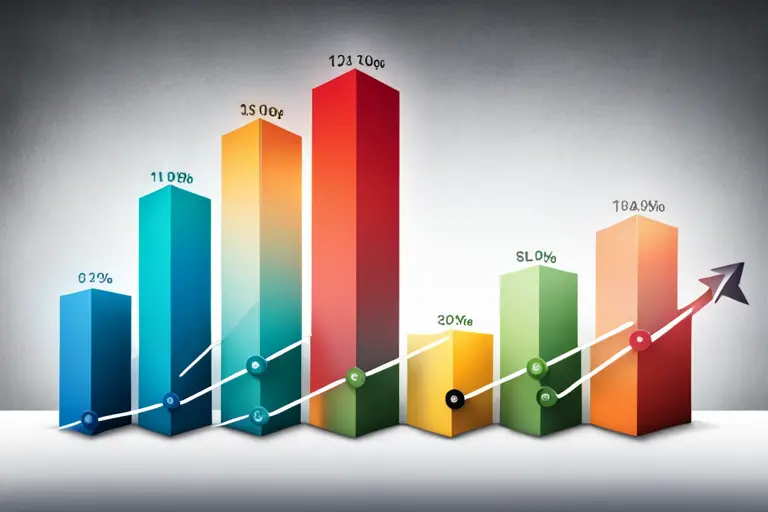Are you struggling to measure the success of your social media marketing efforts? Do you need more concrete data to justify your social media budget to higher-ups? Measuring the return on investment (ROI) of social media marketing is critical to understanding the effectiveness of your strategy and making informed decisions about future investments.
In this article, we will explore the importance of social media marketing ROI and how analytics tools can help you measure it. We’ll discuss how to track audience engagement, analyze website traffic and conversions, and identify areas for improvement.
By the end of this article, you’ll have a better understanding of how to achieve your marketing goals through ROI analysis.
The Importance of Social Media Marketing ROI
The significance of social media marketing ROI can’t be overstated as it’s like having a measuring tape to track progress towards your goals. Measuring your social media marketing ROI helps you understand the effectiveness of your campaigns and identify areas that need improvement.
It’s essential to have a clear understanding of the return on investment of your social media marketing efforts to justify your budget and ensure that you’re getting the most out of your efforts.
Social media marketing ROI not only helps you measure the success of your campaigns but also provides valuable insights into your target audience’s behavior. By analyzing your ROI, you can determine what content resonates with your audience, what channels they prefer, and what topics interest them the most.
This data allows you to fine-tune your social media marketing strategy to better target your audience and create more engaging content. Ultimately, measuring your social media marketing ROI ensures that you’re making informed decisions based on data, leading to better outcomes for your business.
Defining ROI in Social Media Marketing
You may be wondering what exactly you’re getting out of your social media efforts, and defining your return on investment is crucial to understanding the true impact of your strategy.
ROI, or return on investment, refers to the amount of profit or value gained from an investment in relation to the amount of money spent on that investment.
In social media marketing, ROI can be measured in a variety of ways, including engagement metrics, lead generation, website traffic, and ultimately, revenue.
It’s important to note that social media ROI is not always directly tied to revenue. While revenue is certainly a key metric, it’s not the only one that should be considered.
For example, social media can also be used to improve customer satisfaction, build brand awareness, and connect with influencers in your industry.
By measuring the ROI of these efforts, you can better understand the value of your social media presence and make informed decisions about how to optimize your strategy for maximum impact.
Selecting Analytics Tools for Measuring ROI
When selecting analytics tools, it’s important to consider the specific metrics that align with your business goals and objectives.
There are a variety of analytics tools available, each with their own unique features and capabilities. Some popular options include Google Analytics, Hootsuite, and Sprout Social.
Google Analytics is a powerful tool for tracking website traffic and user behavior. It can provide valuable insights into how users are interacting with your website and where they are coming from.
Hootsuite and Sprout Social are both social media management tools that offer analytics features. These platforms allow you to track engagement, follower growth, and social media referrals to your website.
Ultimately, the key is to choose an analytics tool that aligns with your specific business goals and provides the insights you need to measure your social media marketing ROI.
Tracking Audience Engagement with Analytics
To effectively track audience engagement, it’s crucial to utilize analytics tools that align with your business goals and provide valuable insights into user behavior.
By tracking metrics such as page views, click-through rates, and bounce rates, you can gain a deeper understanding of how your audience is interacting with your social media content. This data can help you identify which types of posts are resonating with your audience and which ones are falling flat.
In addition to tracking basic metrics, it’s also important to use analytics tools that allow you to measure more advanced metrics such as sentiment analysis and social media reach. Sentiment analysis can help you understand how your audience feels about your brand, while social media reach can help you determine how far your content is spreading across social media channels.
By tracking these metrics, you can gain a more comprehensive view of your audience engagement and make data-driven decisions to improve your social media marketing ROI.
Analyzing Website Traffic and Conversions
By analyzing your website traffic and conversions, it’s easy to see which pages are performing well and which ones may need improvement. Through analytics, you can track the number of visitors to your website, how long they stay, and which pages they visit the most.
With this information, you can determine which pages are driving the most traffic and engagement, and adjust your marketing strategy accordingly. Additionally, by tracking conversions, you can measure the success of your social media marketing efforts.
Conversions refer to actions taken on your website, such as filling out a contact form or making a purchase. By analyzing conversion data, you can determine which social media platforms are driving the most conversions and adjust your marketing budget accordingly.
By regularly analyzing your website traffic and conversions, you can make informed decisions about your social media marketing strategy and optimize your ROI.
Identifying Areas for Improvement with Analytics
Now that you’ve analyzed your website traffic and conversions, it’s time to identify areas for improvement with analytics.
Analytics provide valuable insights into your social media marketing efforts, allowing you to track your progress and adjust your strategy accordingly. By using analytics, you can pinpoint which areas of your social media marketing are working and which ones need improvement.
One way to identify areas for improvement is by analyzing your engagement metrics. This includes likes, comments, shares, and clicks. By analyzing these metrics, you can see which types of content are resonating with your audience and which ones are falling flat.
You can also identify which social media platforms are driving the most engagement and adjust your strategy accordingly. Overall, using analytics to identify areas for improvement is crucial in maximizing the ROI of your social media marketing efforts.
Achieving Marketing Goals with ROI Analysis
You can visualize the impact of your marketing efforts by comparing the resources you invested in them to the results you achieved. This is where ROI analysis comes in handy.
By measuring the return on investment (ROI) of your social media marketing campaigns, you can determine whether your efforts are yielding the desired results or not.
To achieve your marketing goals with ROI analysis, you need to first define your objectives. What do you want to achieve with your social media marketing efforts? Is it to increase brand awareness, drive website traffic, generate leads, or boost sales?
Once you’ve identified your objectives, you can use analytics tools to track and measure the performance of your campaigns. This will enable you to see what’s working and what’s not, and make informed decisions on where to allocate your resources for maximum impact.
By using ROI analysis, you can optimize your social media marketing strategies to achieve your marketing goals and get the best possible results from your investments.
Frequently Asked Questions
What are some common mistakes businesses make when measuring social media ROI?
You might miss some important metrics when measuring social media ROI if you rely solely on vanity metrics such as likes and followers. Also, not setting clear goals, not tracking conversions, and not considering the cost of resources can lead to inaccurate measurements.
How can social media ROI be compared to other marketing channels, such as email or paid advertising?
To compare social media ROI to other marketing channels, you need to establish a baseline and track conversions across all platforms. Use analytics to determine which channel provides the highest return on investment.
Is it possible to measure the intangible benefits of social media marketing, such as brand awareness or customer loyalty?
Yes, it’s possible to measure intangible benefits of social media marketing like brand awareness and customer loyalty by tracking engagement metrics, sentiment analysis, and surveys. These help gauge the impact of social media on consumer behavior.
Are there any limitations to using analytics tools for measuring social media ROI?
You may face limitations when using analytics tools to measure social media ROI. These limitations include difficulty in accurately tracking conversions, inability to measure intangible benefits, and the need for human interpretation of data.
How can businesses use social media ROI analysis to inform their overall marketing strategy?
Use social media ROI analysis to inform your marketing strategy by identifying which platforms and campaigns are most effective in reaching your target audience. Use this information to allocate resources and optimize future efforts.
Conclusion
So, you’ve learned about the importance of measuring the ROI of your social media marketing efforts, and you now understand how to define ROI and select the right analytics tools to track it.
But what’s next? How can you use this data to improve your marketing strategy and achieve your goals?
Well, by analyzing audience engagement, website traffic, and conversions, you can identify areas for improvement and adjust your approach accordingly. By doing so, you’ll be able to optimize your social media campaigns and achieve better results, all while maximizing your ROI.
So don’t hesitate to dive into your analytics data and start using it to your advantage today!

Hey there, tech enthusiasts! I’m your go-to content writer, delving into the fascinating world of technology hacks. Get ready to unlock mind-blowing secrets and discover innovative solutions through my engaging and insightful blogs.


